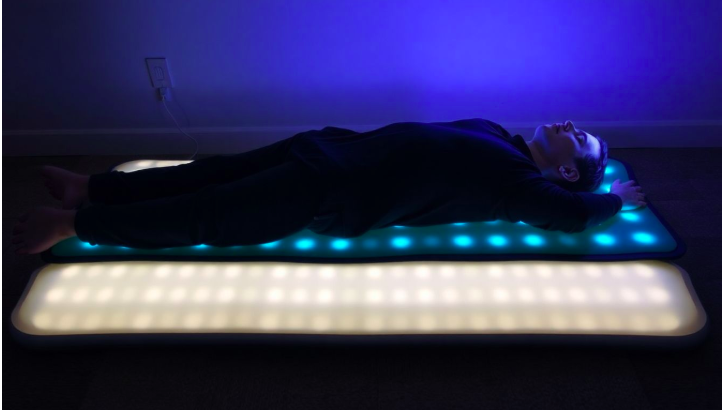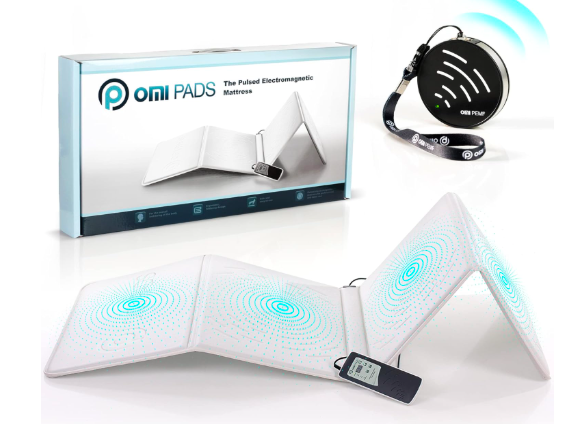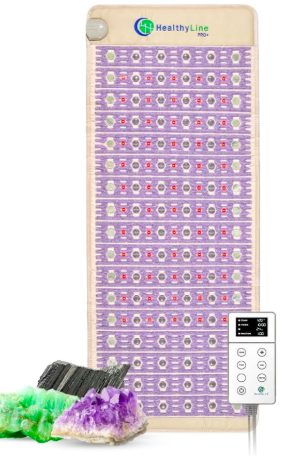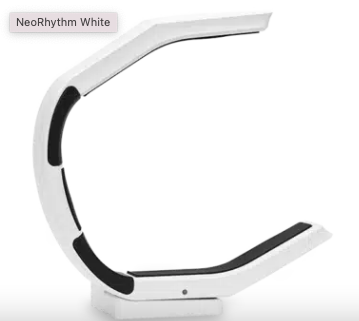
Multiple Sclerosis (MS) is a complex neurological condition that affects millions of people worldwide. As a researcher focused on innovative holistic treatments, I’ve become fascinated by the potential of Pulsed Electromagnetic Field (PEMF) therapy in managing MS symptoms and possibly influencing disease progression.
This non-invasive approach has been gaining traction in the medical community, and for good reason.
The Science Behind PEMF Therapy
PEMF therapy uses low-frequency electromagnetic fields to stimulate cellular activity. Our bodies are fundamentally electromagnetic in nature, and by applying external electromagnetic fields, we can influence various physiological processes.
Theoretical Background
PEMF therapy aims to restore the natural electromagnetic balance within our cells. In MS, this balance is often disrupted because of inflammation and neurodegeneration.
The electromagnetic pulses generated by PEMF devices penetrate deep into tissues, influencing cellular functions at a fundamental level.
A key theory behind PEMF therapy’s effectiveness in MS is its potential to modulate the immune system. MS is an autoimmune condition where the body’s immune system mistakenly attacks the myelin sheath protecting nerve fibers.
PEMF therapy may help regulate this overactive immune response, potentially slowing down the progression of the disease.
Practical Applications
PEMF therapy for MS typically involves regular sessions where the patient is exposed to electromagnetic fields generated by specialized devices. These sessions can be conducted in clinical settings or at home with portable PEMF devices.
The applications of PEMF therapy in MS are diverse. It’s being explored for symptom management, including pain relief, fatigue reduction, and improvement in cognitive function.
Some studies have even suggested its potential in promoting re-myelination, a crucial aspect of MS treatment.
Overcoming Challenges in PEMF Therapy for MS
One of the main challenges in PEMF therapy for MS is determining the optimal treatment protocols. Factors such as frequency, intensity, and duration of exposure can significantly impact the therapy’s effectiveness.
Researchers are working to establish standardized protocols that can be tailored to person patients’ needs.
Another challenge is the variability in patient responses. Like many MS treatments, what works for one person may not work for another.
This necessitates a personalized approach to PEMF therapy, often involving a period of trial and adjustment.
Implementing PEMF Therapy for MS
If you’re considering PEMF therapy for MS, here’s a comprehensive guide to get you started:
1. Consult with Your Neurologist
Before beginning any new treatment, it’s crucial to talk about it with your MS specialist. They can help you understand if PEMF therapy is appropriate for your specific case.
Your neurologist will consider factors such as your MS type, current symptoms, and overall health status.
They may also review any existing research on PEMF therapy for MS to provide you with an informed opinion.
2. Choose a PEMF Device
There are various PEMF devices available, ranging from clinical-grade equipment to home-use devices. Work with your healthcare provider to select one that’s suitable for your needs and budget.
Consider factors such as:
- Device power and intensity range
- Frequency options
- Ease of use
- Portability (if you plan to use it at home)
- Cost and warranty
Some popular PEMF devices for MS; that can be used at home, include:
OMI BioPEMF Mat: Two products for the price of one on Amazon: Includes the OMI Full Body Mat for home use and the OMI Portable Medallion for on-the-go convenience. These products claim to improve cellular health, increase circulation, reduce inflammation in cells and tissues, improve sleep, and accelerate recovery from injuries or surgery.

HealthLine Platinum mat: Alleviates muscle and joint pain, reduces stress, boosts energy, and promotes circulation. Intended to be used for relief of muscle pain, joint pain, and stiffness. Also provides relief of muscle spasms, minor sprains and strains, and minor muscular back pain. Used for the relaxation of muscles; and for the increase of local circulation where applied. Ideal for full body therapy sessions, must utilize regularly for optimal results.

NeoRhythm: NeoRhythm is a wearable device that uses pulsed electromagnetic field (PEMF) technology to promote wellness and enhance daily life. Its lightweight, comfortable design allows for easy use on various body parts, making it an ideal; portable, full-body device.
With pre-set programs and customizable options, NeoRhythm can be tailored to individual needs for personalized therapy. Whether reducing tension, increasing relaxation, or improving circulation, the device is a convenient and innovative solution for promoting wellness.
NeoRhythm is rechargeable and comes equipped with a mobile app for tracking sessions and customizing programs, adding to its overall convenience.

Your healthcare provider may have specific recommendations based on their experience with MS patients.
3. Determine Your Treatment Schedule
Based on your symptoms and overall health, establish a regular treatment schedule. This might involve daily sessions of varying durations.
A typical PEMF therapy schedule for MS might look like this:
- Morning session: 15-30 minutes upon waking
- Afternoon session: 15-30 minutes after lunch
- Evening session: 15-30 minutes before bed
However, your specific schedule may vary depending on your symptoms, lifestyle, and response to the therapy. Some patients find that longer sessions (up to 2 hours) once or twice a day are more useful.
4. Start with Low Intensity
Begin with lower intensity settings and gradually increase as you become accustomed to the therapy. This approach helps minimize any potential side effects and allows your body to adjust to the electromagnetic fields.
A typical starting protocol might be:
- Week 1-2: 10% intensity, 15 minutes per session
- Week 3-4: 25% intensity, 20 minutes per session
- Week 5-6: 50% intensity, 25 minutes per session
Continue to increase intensity and duration as tolerated, always under the guidance of your healthcare provider.
5. Monitor Your Symptoms
Keep a detailed journal of your symptoms before and after PEMF therapy sessions. This will help you and your healthcare provider assess its effectiveness.
Track factors such as:
- Pain levels
- Fatigue
- Cognitive function
- Mobility
- Sleep quality
- Mood
Be as specific as possible in your observations. For example, instead of just noting “less pain,” record “reduced lower back pain from 7/10 to 4/10 after 30-minute PEMF session.”
6. Adjust as Needed
Be prepared to change your treatment protocol based on your response. This might involve changing the frequency, intensity, or duration of sessions.
For example, if you’re experiencing increased fatigue after longer sessions, you might try shorter, more frequent sessions throughout the day.
7. Combine with Other Treatments
PEMF therapy can often be used in conjunction with other MS treatments. Work with your healthcare team to mix it into your overall treatment plan.
This might include:
- Combining PEMF therapy with physical therapy sessions
- Using PEMF therapy before or after taking MS medications
- Incorporating PEMF therapy into your stress management routine
Adapting PEMF Therapy to Different MS Types
PEMF therapy can be adapted to suit different types of MS:
Relapsing-Remitting MS (RRMS)
For RRMS, PEMF therapy might be used to manage symptoms during relapses and potentially reduce their frequency. A typical approach might involve:
- Increased session frequency during relapses (up to 3-4 times daily)
- Focus on anti-inflammatory settings
- Combining PEMF therapy with rest and stress reduction techniques
Progressive MS (Primary Progressive and Secondary Progressive)
In progressive forms of MS, the focus might be on slowing disease progression and managing chronic symptoms. Strategies might include:
- Longer daily sessions (up to 2 hours)
- Emphasis on neuroprotective frequencies
- Combining PEMF therapy with cognitive exercises and physical therapy
MS with Significant Fatigue
For patients with significant fatigue, PEMF protocols targeting energy production and mitochondrial function might be emphasized. This could involve:
- Multiple short sessions throughout the day
- Focus on frequencies associated with ATP production
- Combining PEMF therapy with gentle exercise and proper nutrition
Advanced PEMF Techniques for MS
As you become more familiar with PEMF therapy, you can explore advanced techniques:
1. Targeted Applications
Use PEMF therapy to address specific MS symptoms:
- For bladder dysfunction: Apply PEMF to the lower abdomen and pelvic area
- For visual disturbances: Focus on the occipital region of the brain
- For neuropathic pain: Target affected limbs or body areas
2. Combining PEMF with Exercise
Enhance the benefits of physical therapy by incorporating PEMF:
- Use PEMF before exercise to improve blood flow and reduce stiffness
- Apply PEMF during gentle stretching to potentially enhance flexibility
- Use PEMF after exercise to aid in recovery and reduce inflammation
3. Cognitive Enhancement
Explore PEMF protocols designed to support cognitive function:
- Use specific frequencies associated with improved focus and memory
- Combine PEMF therapy with cognitive training exercises
- Apply PEMF to the frontal and temporal lobes during mental tasks
4. Sleep Optimization
Utilize PEMF therapy to potentially improve sleep quality:
- Use lower frequencies before bedtime to promote relaxation
- Apply PEMF to the head and neck area to potentially influence melatonin production
- Combine PEMF therapy with sleep hygiene practices for optimal results
Exercises to Enhance PEMF Therapy Benefits
To maximize the potential benefits of PEMF therapy, consider these exercises:
Mindful Breathing
Practice deep breathing exercises during PEMF sessions to enhance relaxation and potentially improve cellular oxygenation. Try this technique:
- Inhale deeply through your nose for a count of 4
- Hold your breath for a count of 4
- Exhale slowly through your mouth for a count of 6
- Repeat for the duration of your PEMF session
Visualization
Imagine the electromagnetic fields promoting healing and repair in your body during therapy sessions. Visualize:
- Healthy myelin regenerating around nerve fibers
- Inflammation reducing throughout your body
- Energy flowing freely through your nervous system
Gentle Stretching
Incorporate light stretching exercises before or after PEMF therapy to improve circulation and flexibility. Some MS-friendly stretches include:
- Seated spinal twist
- Gentle neck rolls
- Ankle and wrist rotations
- Hamstring stretches (if mobility allows)
Always talk to your physical therapist to ensure these stretches are appropriate for your condition.
Cognitive Exercises
Engage in brain-training activities following PEMF sessions to potentially enhance cognitive benefits. Try:
- Sudoku or crossword puzzles
- Memory games on your smartphone or tablet
- Learning a new language using apps like Duolingo
- Practicing mindfulness meditation
Potential Side Effects and Precautions
While PEMF therapy is generally considered safe, it’s important to be aware of potential side effects and take necessary precautions:
Possible Side Effects
Some people may experience:
- Mild headaches
- Temporary increase in fatigue
- Slight dizziness
- Tingling sensations
These effects are usually temporary and often subside as your body adjusts to the therapy.
Precautions
PEMF therapy may not be suitable for everyone. Avoid or use with caution if you:
- Have a pacemaker or other implanted electrical device
- Are pregnant
- Have a history of seizures
- Have active bleeding or hemorrhage
Always talk to your healthcare provider before starting PEMF therapy, especially if you have any of these conditions.
The Future of PEMF Therapy in MS Treatment
The field of PEMF therapy for MS is rapidly evolving. Ongoing research is exploring:
- Optimal frequencies and intensities for specific MS symptoms
- The potential of PEMF therapy to promote remyelination
- Combining PEMF therapy with other emerging MS treatments
- Long-term effects of PEMF therapy on MS progression
As more clinical trials are conducted, we may see PEMF therapy becoming a standard part of MS treatment protocols.
Key Takeaways
- PEMF therapy shows promise in managing MS symptoms and potentially influencing disease progression.
- It works by applying low-frequency electromagnetic fields to stimulate cellular activity and modulate immune responses.
- Implementing PEMF therapy requires careful planning and consultation with healthcare providers.
- Consistency and patience are key to experiencing potential benefits.
- PEMF therapy should be part of a comprehensive MS management plan, not a standalone treatment.
- As research progresses, PEMF therapy may play an increasingly important role in MS treatment.
People Also Asked
What is PEMF therapy?
PEMF therapy uses pulsed electromagnetic fields to stimulate cellular repair and function. It involves exposing the body to low-frequency electromagnetic radiation.
How does PEMF therapy work for Multiple Sclerosis?
PEMF therapy may help MS by reducing inflammation, promoting cellular repair, and potentially modulating the immune system. It aims to improve overall cellular function in the body.
Is PEMF therapy FDA approved for Multiple Sclerosis?
While PEMF devices are FDA approved for certain conditions, they are not specifically approved for treating MS. However, many MS patients use them off-label under medical supervision.
How often should PEMF therapy be used for MS?
The frequency of PEMF therapy for MS varies, but many patients use it daily. Sessions typically last 15-60 minutes, sometimes many times per day.
Always talk to your doctor for personalized advice.
Can PEMF therapy help with MS fatigue?
Some MS patients report reduced fatigue with PEMF therapy. It may help by improving cellular energy production and reducing inflammation, but more research is needed to confirm these effects.
Are there any risks to using PEMF therapy for MS?
PEMF therapy is generally considered safe, but it may not be suitable for everyone. People with electrical implants, pregnancy, or certain other conditions should avoid it.
Always consult a healthcare provider before starting.
How long does it take to see results from PEMF therapy for MS?
Results can vary widely. Some people report feeling benefits after a few sessions, while others may need several weeks of consistent use.
It’s important to be patient and consistent with the therapy.
Can PEMF therapy replace conventional MS treatments?
PEMF therapy should not replace conventional MS treatments. It’s best used as a complementary therapy alongside standard medical care.
Always talk about any new treatments with your neurologist.
What’s the difference between PEMF therapy and electromagnetic therapy?
PEMF therapy uses pulsed electromagnetic fields, while electromagnetic therapy is a broader term that can include constant electromagnetic fields. PEMF is considered more useful because of its pulsed nature.
How much does PEMF therapy cost for MS treatment?
Costs can vary widely depending on whether you’re using a clinical device or purchasing a home unit. Home units can range from a few hundred to several thousand dollars.
Some clinics offer sessions for $30-$100 each.
Disclaimer: This website contains affiliate links to products, including those from Amazon and Omnipemf. As an affiliate, I may earn a commission if you make a purchase through these links, at no additional cost to you. Please note that I only recommend products I believe may provide value. However, these products are not intended to diagnose, cure, or prevent any medical condition. Always consult a qualified healthcare provider before using PEMF devices or when changing your health regimen.